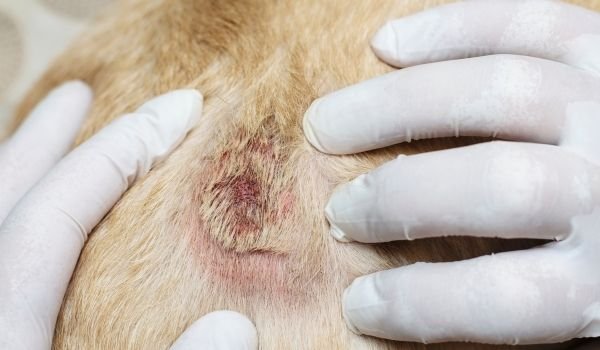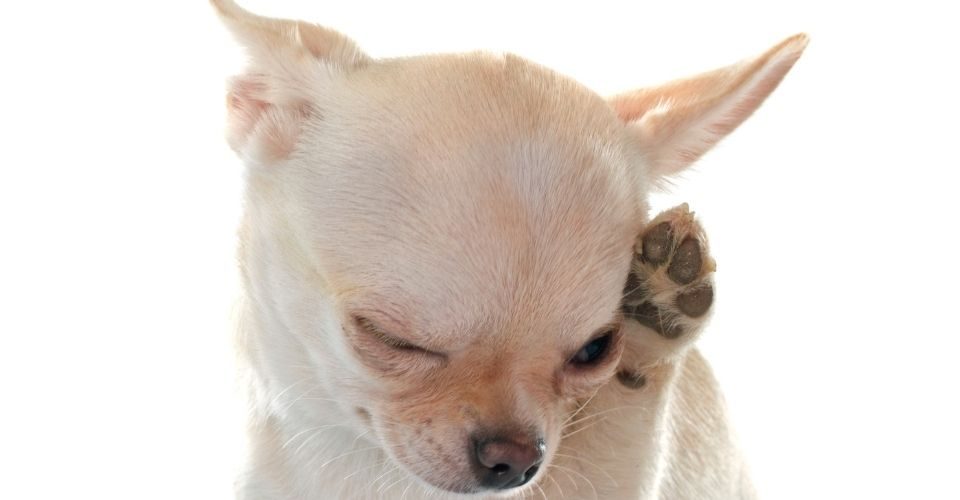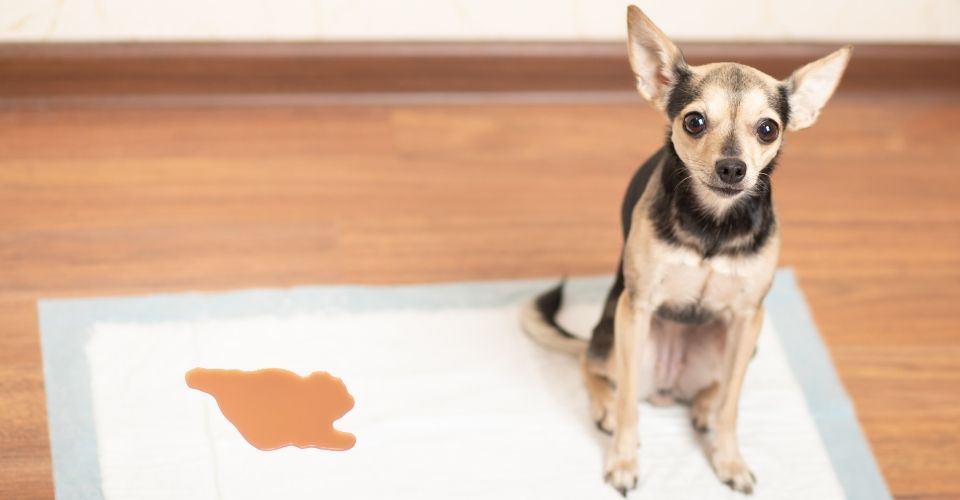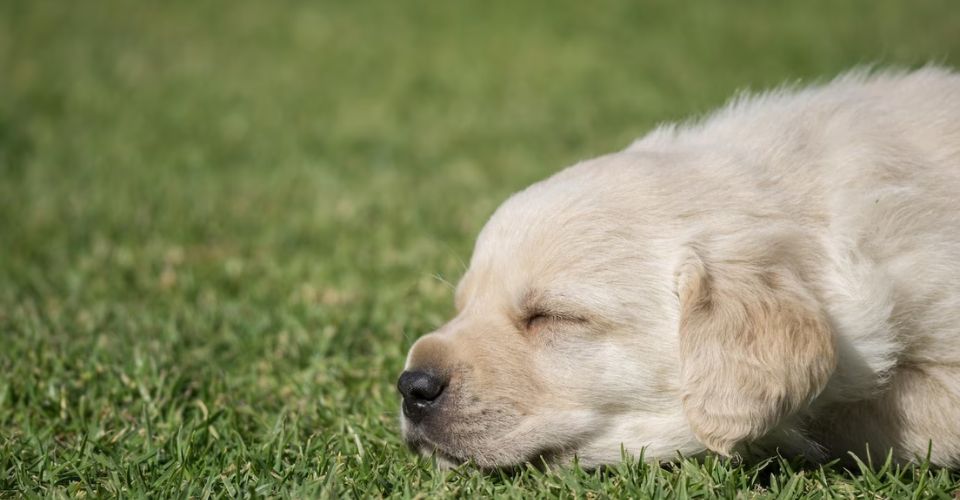Dog dandruff doesn’t just look icky but is painful for your dog as well. The itchiness caused by dandruff keeps him up all night to paw and scratch his skin. Being a responsible dog parent, you need to know everything about dog dandruff, including its causes, symptoms, and preventions.
For your convenience, we have compiled all the details on one page.
1. What is Dandruff?
In medical terms, dog dandruff is called “canine seborrhea” caused by “Seborrheic dermatitis.” It is a common skin condition that primarily affects the dog’s hairy and oily body parts, causing red skin, scaly patches, and flakes.
There are two types of Seborrheic dermatitis:
Seborrhea Sicca
Seborrhea Sicca is a dry skin condition where dead skin cells build up in a dog’s hair.
Dryness can result from excess shampooing, dry weather, malnutrition, skin infections, etc., which sap the body oils.
Seborrhea Oleosa
On the contrary, seborrhea oleosa is a dog’s skin condition in which the body produces excessive oils, and if not washed, the oil accumulates on the skin in the form of dander.
Dogs develop this condition when not bathed regularly, especially after vigorous exercises that cause sweat.
2. Causes

There are several causal factors behind dandruff. Let’s find out which one is affecting your dog.
i. Environment
As the season changes, the dog’s body conforms to it. Hair shedding, oil secretions, or dandruff are the most common sidelines of such conformity.
Dander can appear both in winter and summer.
In winters, it’s because the air is devoid of humidity which causes skin dryness, leading to dander in the dog’s scalp.
On the other hand, in summers, the temperatures are high, and the dog’s body often sweats to maintain the internal temperature. Consequently, this sweating, if not washed, causes dandruff in the dog’s hair.
ii. Grooming
Grooming serves more than just making your dog look good. Instead, it can help prevent plenty of infections and diseases.
Regular bathing, nail, ear, and eye cleaning can help ward off bacteria, fungus, allergies, etc.
If a dog is not bathed routinely, oils accumulate on his skin, leading to sticky hair, foul odor, and dandruff.
iii. Diet
Your dog’s diet plays a critical role in his overall health.
Quality, amount, and routine, everything matters when it comes to dog feeding. If your dog is malnourished or overfed, or if his food is not manufactured as per the AAFCO guidelines, this can deteriorate his health. The signs of bad health conditions usually manifest themselves on their skin first. Consequently, if your dog does not receive sufficient nutrients, it will develop dry skin, dandruff, and other health complications.
iv. Allergies
Allergies from food and the environment also take a toll on a dog’s skin. Allergens such as pollen, dust, mold, beef, chicken, soy or gluten, dairy products, chicken eggs, lamb, etc., can create different reactions that ultimately impact the skin, causing inflammation, redness, and dandruff.
v. Hormonal Conditions
The metabolism of dogs is controlled by the thyroxine hormone released by the thyroid gland. If the gland doesn’t produce enough of this hormone, your dog is susceptible to hypothyroidism. As a result, the dog gets stomach upsets which impacts his overall health and causes seborrhea.
The Cushing’s syndrome occurs when a dog’s body excessively produces a hormone called cortisol. This chemical helps them cope with stress, control their weight and sugar levels, and fight infections. But abnormal production can lead to a pot belly, excessive thirst, panting, skin infections, and skin thinning. These skin issues ultimately lead to dandruff, patching, and scaling.
vi. Yeast Dermatitis (YD)
YD, also known as Malassezia dermatitis, is caused by the fungus Malassezia pachydermatis. This fungus is usually present in a dog’s fur but isn’t active. However, if temperature increases and the fur is moist, the yeast activates and grows abnormally, causing itchiness, redness, hyperpigmentation, scales, crusty, and flaky skin.
vii. Bacterial Dermatitis
Other than the yeasts, there might be bacteria growing on your dog’s skin, causing scalp dryness. “Stap” is a common bacterium that fosters skin infections, resulting in itchy skin, which is reddened and has rashes, crusts, dandruff, and pustules.
viii. Ichthyosis
This is the least common cause of dander in dogs. Ichthyosis is a condition in which the outer layer of skin is not developed properly, resulting in greasy and thick flake deposits on the skin. In addition to the flakes and scales on the body, there may be areas of thickened skin with increased pigmentation.
3. Symptoms
If you have a dog, look for the following symptoms to see if your dog has dandruff issues or not.
i. Excessive Amounts of White Flakes
The visible symptom of a dog’s dandruff is the white flakes.
If your dog’s dandruff is at the initial stages, there’d be a few white crumbs dispersed on the fur of your dog. However, when the problem gets worse, the flaky skin appears on their hair and falls off wherever they go.
If a dog has a dense double-coat and it is not brushed regularly, you wouldn’t know if dander is developing at the hair roots as flakes. Because owing to thick hair, dandruff remains hidden. Moreover, if dog fur is white, you won’t notice the flakes even if the situation is worse unless the distinctive dander smell reaches you.
ii. Scratching and Licking
Dandruff causes itchiness all over the dog’s body, causing him to scratch or lick his body.
You might have noticed that your dog is nibbling his own tail, licking his feet, or pawing his ears. He is doing that because he is feeling really irritated by the presence of dandruff. It is because the scalp is sensitive, and if there are lice, fleas, or dander, it gets itchy, and dogs feel the urge to brush them off by scratching or licking.
iii. An Odor to the Skin
If dandruff stays for longer than two or three days, it starts giving off a musty, oily, and waxy smell. When that adds up to the dog’s own odor, it becomes hard to sit near your dog, let alone kiss him.
iv. Hair Loss
Dandruff is not directly related to hair loss.
When there is dander on a dog’s scalp, and he scratches his skin, the hair follicles at the roots get damaged, leading to hair loss.
v. Red, Irritated Skin and Bleeding
Dogs have sharp nails. Constantly digging those nails into sensitive skin bruises it badly. Frequent rubbing and pawing the skin leads to redness, irritation, or bleeding.
There are other conditions, such as canine dermatitis, injuries, pyoderma, that cause skin redness. However, if the dog’s skin is red, plus there are white flakes, it is a no-brainer that the cause is dandruff.
4. Prevention
i. New Food
If your dog is enduring skin issues, it’s better to start off by changing his food. Feed them with premium quality food manufactured under AAFCO canine food guidelines. As far as the amount is concerned, consult your vet to determine how much food will be enough for your pooch per his size, age, health conditions, and physical activity.
Remember, both overeating or under-eating make dogs susceptible to skin infections.
ii. Better Grooming
Regular grooming is the best way to prevent dryness or greasiness on the skin.
If your dog has a double coat, or if he workouts every day, then routine bathes using high-quality dog shampoos are mandatory to wash off sweats and body oils that cause dander and bad odor. Also, slightly trim their nails and remove the dust underneath so that the scratching won’t cause scabbing.
iii. Get a Humidifier
Dry air causes skin dryness. As a result, the body secretes more oil to moisten the skin, making fur greasy and causing dead cell accumulation, which leads to dandruff. It happens most often during the winter when the air lacks humidity. Therefore, use a humidifier in your home to keep the dog’s skin from getting cold.
5. Dog Breeds With Inherited Seborrhea
- American Cocker Spaniels
- English Springer Spaniels
- Basset Hounds
- Dachshunds
- Labrador Retrievers
- Golden Retrievers
- German Shepherds
- Doberman Pinschers
- Shar-Peis
- West Highland White Terriers
But not every dog from the above breeds has hereditary dandruff issues. If your dog, irrespective of the breed, has seborrhea, run him through the vet. It is curable as well as avoidable if the preventive measures discussed above are paid heed to.





